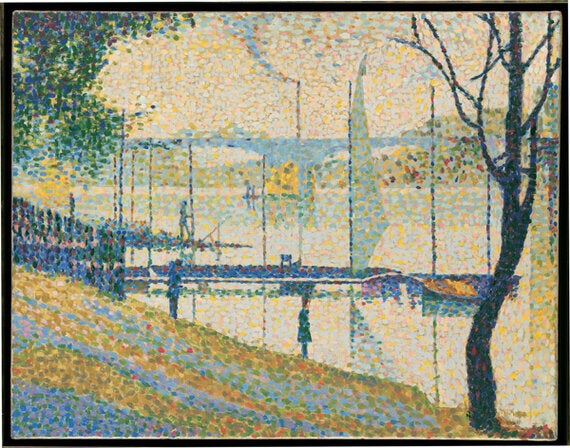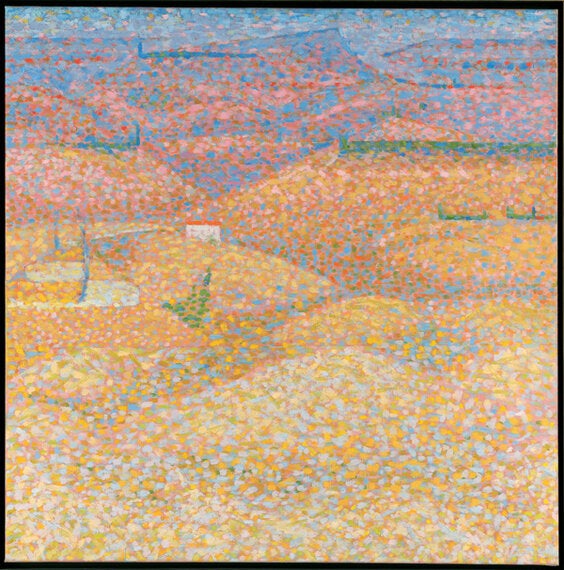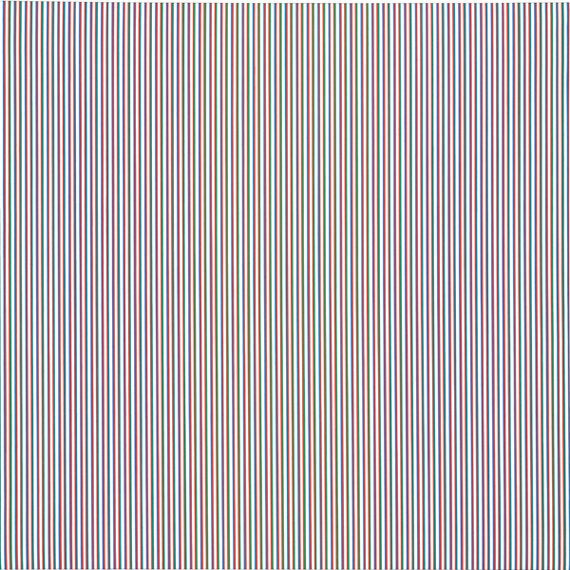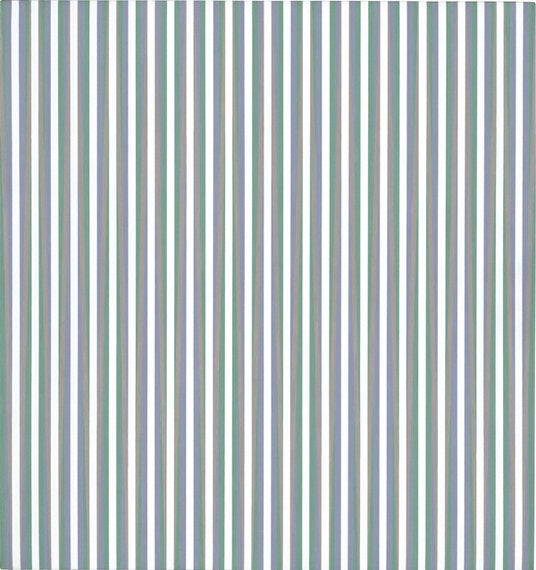British painter Bridget Riley, now 84, is best known worldwide by those abstract, almost hallucinatory, stripes, curves and other geometric forms that seemed to gel with the psychedelic '60s and beyond. They epitomised a new spirit and language in painting.
Less well known is that one of the most important influences on her art has been the French impressionist painter, Georges Seurat.
A new exhibition at London's Courtauld Gallery, Bridget Riley: Learning from Seurat, co-curated by Barnaby Wright and Karen Serres, follows the journey of Riley's career and the continuing influence Seurat has had on her oeuvre.
After leaving art school in the late 1950s, Riley was, in her own words, "struggling to make my own work come alive". She became fascinated in Seurat's use of dots in his paintings, but couldn't understand just by looking at them how they enhanced colour and how they seemed to create light intrinsically.
To try to understand where his light came from, instead she set about recreating what she regarded as his best painting, The Bridge at Courbevoie (1886-7), a semi-rural/industrial scene set by the River Seine. Working from a reproduction to give her distance, she was less interested in actual form, more in the way Seurat had constructed his work.

The result (above) was less a copy, more what she called a transcription. The dots are much larger than those in the Seurat, and Riley's version has been scaled up. The Seurat is also included in the show but Riley didn't want them to hang side by side since hers was experimental and deliberately more rough and ready than the original.
"She was really trying to dissect everything that he was doing and how he was creating reflection on the water and the light because it's quite a complex picture," says Karen Serres. "You see the sails, you see the water through it, and the sky says it's a gloomy day, so there's a lot to capture and render that isn't easy and I think that her copy makes me look at what Seurat was doing all over again."

From here, Riley began making pointillist pictures of her own. Above is Pink Landscape (1960), inspired by a trip to the hills above the Italian city of Siena. She was fascinated by the effect the shimmering heat had on the vision of the landscape and wanted to use Seurat's dot technique to capture this natural effect. Barnaby Wright considers it her most important painting of this period.
"It's a sort of bridging work into abstraction for her because as the forms of the hills dissolve, so the effects of pure colour come to the fore and the representational character of the picture become less important."
Riley soon made the radical leap into pure abstraction. Interested in tone - light and shade - as much as colour, she began a series of black and white pictures using complex triangular forms, in a way her equivalent to Seurat's dots. In the exhibition they are represented by Tremor (1962) and Burn (1964).

By 1967, she had returned to colour with the visually striking Late Morning (above). Once again, the stripes are an extension of Seurat's dots but they are arranged in such a way as to create optical instability, that kind of psychedelic effect redolent of the era. She was developing the idea of how our perception of colour changes in relation to others around it and the stripes, she felt, gave direction, length and volume that Seurat's dots lacked.
"It's such a powerful canvas that you forget the means she has employed are very limited," says Karen Serres. "There are only three colours on a white background. There's a subtle variation in the size of the stripes so the white's slightly thicker but otherwise it's a very regular motif."
Bridget Riley went on to express herself further in stripes, curves and all manner of complex geometric forms. She began using more colours in her stripe paintings, expanding her colour vocabulary, concentrating on how each related to one another. Subtle variations continued to create those effects of recession and advancing.

Throughout her career, whenever she was stuck, she would return to Seurat's basic fundamentals of tone, line and colour. In a 1970 painting Vapor (above), which concludes the exhibition, the colours are remarkably close to those of Seurat.
"More importantly," says Barnaby Wright, "the kind of mood is very restrained and understated in the way people have talked about in the Seurat original -a morning in which people are quietly contemplating the river. So, to a certain degree, you can see all you need to about her relationship to Seurat through this comparison."
If you'd placed a Bridget Riley abstract downstairs in among the Seurats in the Courtauld's extensive Impressionists collection, it would likely jar at first glance. But this small exhibition is as much a wonderfully educative as well as visual experience in telling the story of how a painter that lived a century before helped a modernist develop a new understanding of colour and perception that she took on and made her own.
Bridget Riley: Learning from Seurat runs at the Courtauld Gallery in Somerset House until 17 January 2016. All images are used with the permission of the gallery.